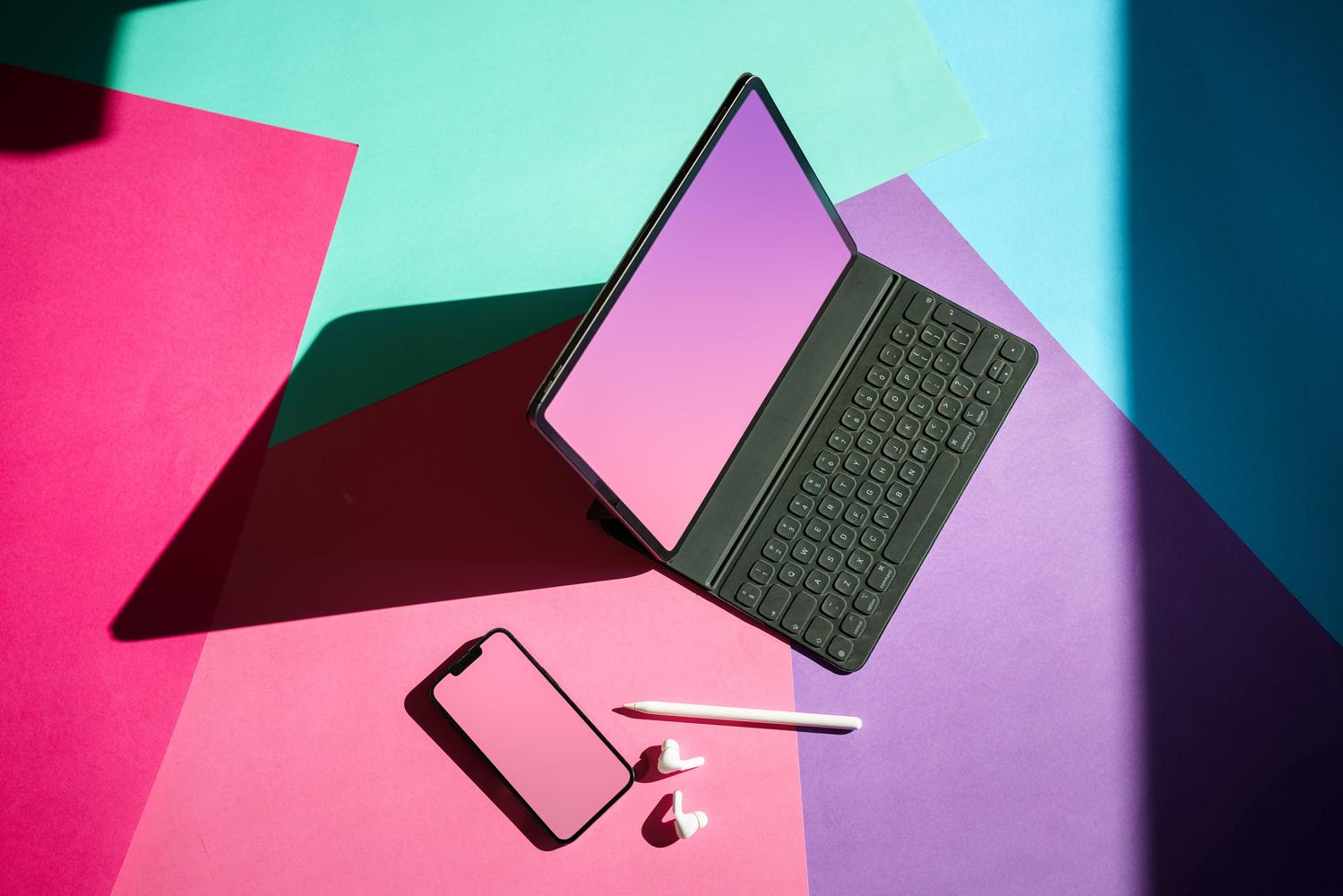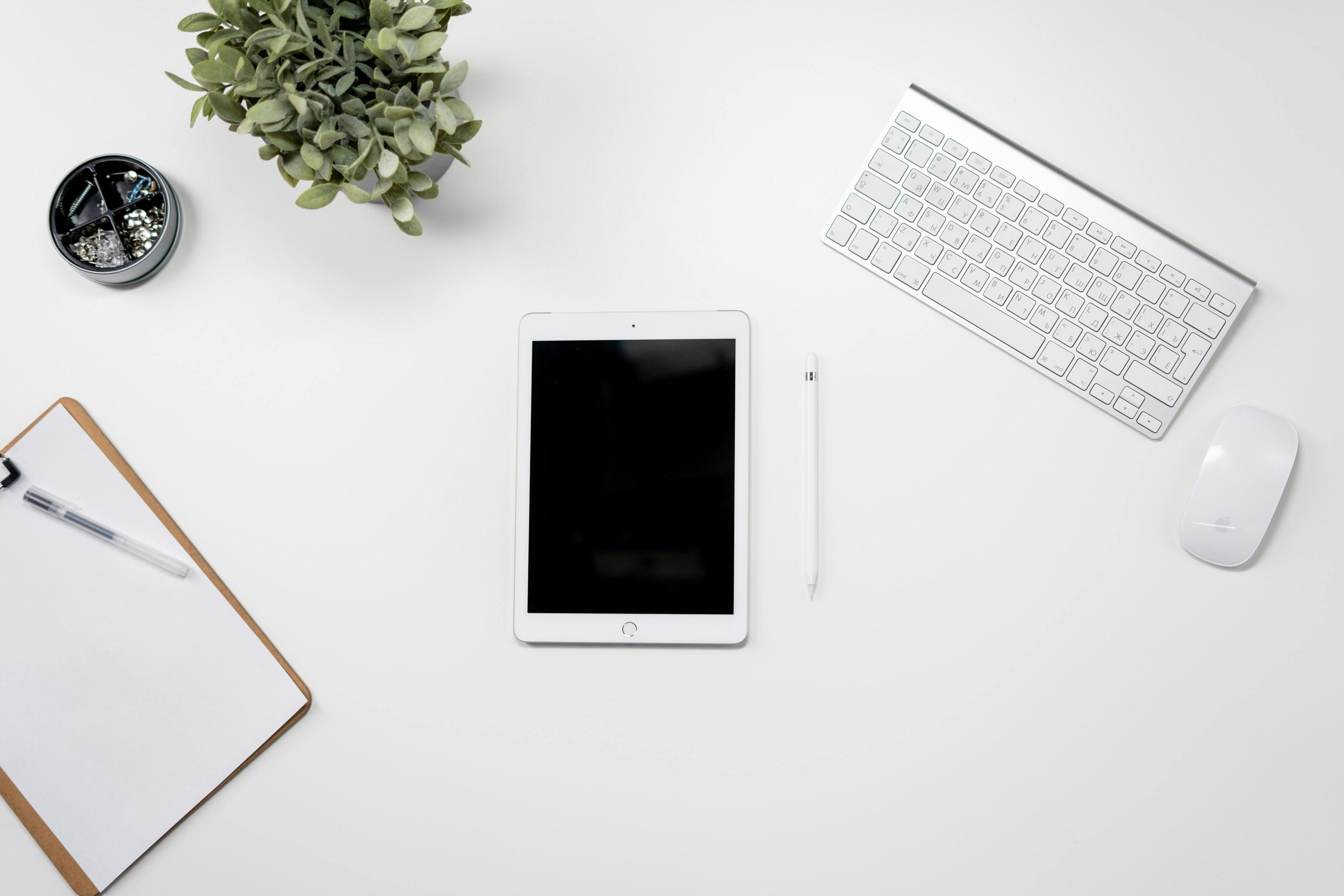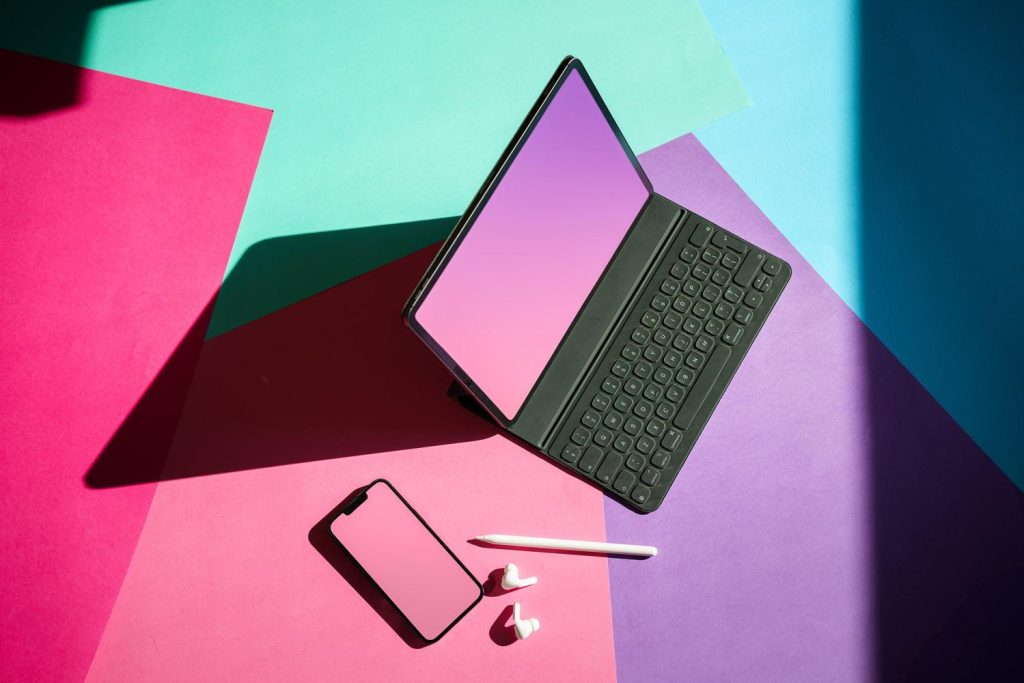Welcome to the intersection of creativity and technology where we delve into the intricacies of user interface design. In today’s digital landscape, the importance of tailoring user experiences to match the device cannot be overstated. Our focus in this blog post is on „Designing UI for Mobile vs.
Desktop”—a topic that challenges designers to adapt and innovate. As we dissect the differences in user expectations, screen real estate, and interaction models between mobile and desktop environments, we’ll provide insights that will help you create seamless and effective UI designs for both platforms.
Join us as we explore the best practices that will elevate your design game, no matter the device.
Understanding the key differences in user experience between mobile and desktop

Understanding the key differences in user experience between mobile and desktop is a fundamental step in creating an engaging and effective UI for different devices. As we plunge into this topic, it’s clear that the design principles diverge significantly due to the inherent characteristics and usage contexts of mobile devices versus desktop computers.
When designing UI for mobile, the most obvious constraint we encounter is the footprint of the screen itself. Mobile screens are smaller, which means every pixel counts, and the user’s focus should be directed towards swift, task-oriented actions. For instance, ergonomics play a big role in mobile design—thumbs become the primary mode of interaction, so UI elements must be accessible within the thumb’s sweep area, often referred to as the „thumb zone.
” This leads to bottom navigation bars or thumb-friendly menus in apps like Instagram and Snapchat. Contrastingly, desktop UI design can afford to prioritize information density and exploit hover states, given the precision of cursor interaction. A website like Airbnb exemplifies this, offering rich, detailed listings with mouse-over effects that would clutter a mobile screen and exceed the touch interface’s capabilities.
Furthermore, the user experience on mobile is often more personal and ubiquitous. Mobile design must account for distractions and interruptions, thus simplicity and ease of navigation are paramount.
Designing UI for mobile means ensuring users can leave and return to tasks without losing their progress or train of thought – a feature seen in popular productivity apps like Todoist, where tasks sync seamlessly across devices. Desktop UI, meanwhile, can assume a more static environment where users are likely to engage in longer, more focused sessions. This opens the door for more complex workflows and multifaceted interfaces, such as in Adobe Photoshop, where toolbars, panels, and menus coexist in a dense but powerful workspace, tailored for professionals.
Lastly, we must consider the varying technical capabilities and usage patterns. Mobile devices are often used on-the-go, relying on cellular networks which may present bandwidth constraints impacting how UI elements load and function.
Prioritizing speed and efficiency, mobile UIs like Facebook Lite are designed to deliver content quickly even on slow connections. Desktop UIs meanwhile typically run on more powerful machines with stable connections, allowing for richer media and complex graphical elements without jeopardizing performance, evident in media-rich news websites like The Verge. In essence, the art of designing UI for mobile versus desktop is like composing two different symphonies with the same instruments, each fine-tuned to perform in unique halls with distinct acoustics. The designer’s task is to understand these nuances, crafting encounters that sing true whether in the palm of your hand or at the expanse of your desk.
Adapting to screen size and resolution: challenges in mobile and desktop ui design

Adapting to Screen Size and Resolution: Challenges in Mobile and Desktop UI DesignIn the jigsaw puzzle that is User Interface (UI) design, crafting the perfect picture for both mobile and desktop platforms often proves to be a herculean task for designers. The distinction between the screens is not simply a matter of size but a divergence in user experience and interaction paradigms.
When designing UI for mobile versus desktop, one must meticulously tailor the visual and functional attire of an application to suit the different body types: the petite and intimate mobile, and the generous and extensive desktop screens. For instance, mobile screens demand a minimalistic design approach due to their limited real estate. The flourishing trend of high-resolution, pixel-dense displays on mobile devices can make micro-UI elements look crisp but can cause a significant accessibility challenge.
To combat this, mobile UI design should prioritize direct interaction with content and embrace gestures like swiping, which is akin to conversing in a bustling café; every motion should have purpose and clarity to navigate through the chatter. Contrast this with desktop UI, where there’s space to spread out; the equivalent of a spacious conference room, permitting more complex navigation structures and multi-window interactions.
Desktop users typically employ cursor-driven controls and thus, UI elements can afford to be more nuanced and detailed. In terms of resolution, consider responsive design – the chameleon that adapts to its environment. A desktop monitor might exhibit UI elements in stunning 4K clarity, whereas a mobile phone could be operating at a much lower resolution.
This contrast demands that designers ensure legibility and functionality across the spectrum. For mobile screens, scalability is key; UI elements must be discernible at any resolution, which might mean scaling up icons and buttons to maintain usability. Conversely, desktop interfaces can handle more intricate designs without sacrificing usability, thanks to typically higher resolutions and more screen real estate allowing for finer detail.
Designing UI for mobile versus desktop is thus a balancing act where creativity meets constraints. It’s parametric design at its finest, where every decision is a variable responding to the device’s screen size and resolution, and ultimately, the user’s journey through the digital space.
Whether on the go with a smartphone or stationed before a desktop, users expect a seamless and visually appealing digital interaction—delivering this unified experience is the UI designer’s pièce de résistance.
Interaction models: designing for touchscreen versus mouse and keyboard inputs

Interaction models: designing for touchscreen versus mouse and keyboard inputsIn the ever-evolving landscape of user interface (UI) design, accommodating the varying interaction models of touchscreen and mouse and keyboard inputs is like choreographing a dance for dancers with different moves. Touchscreen interfaces invite the user to step directly into the dance, engaging with content through the intuitive movements of taps, swipes, and pinches. On the other hand, the mouse and keyboard waltz requires a more measured approach, with precise clicks, scrolls, and keystrokes leading the way.
As such, designing UI for mobile versus desktop demands an acute understanding of the unique capabilities and constraints of each medium to create a harmonious user experience. When approaching design for touchscreens, thumb-friendliness is key.
The UI should cater to the ergonomics of hand-held devices, ensuring that essential elements are within the easy reach of the user’s digits. For example, navigation menus on a mobile application might be situated at the bottom of the screen for effortless access. Gestural interfaces are another consideration—think Tinder’s iconic swipe-to-like mechanism; these can provide a fast and fun interaction that feels almost organic in its simplicity.
Contrastingly, desktop UI design often revolves around the precision of the cursor and the power of keyboard shortcuts. Elements can afford to be smaller and more densely packed, like the intricate cockpit of controls seen in Adobe’s creative suite, where detailed tasks are executed with pinpoint accuracy.
Moreover, the responsive design has become the savvy choreographer’s magic trick, enabling websites and applications to fluidly adapt to the screen at hand. This is not merely about scaling down a desktop site to fit a smaller screen; it’s about reimagining how that experience will unfold. Take, for instance, a complex data dashboard on a desktop browser—it might display multiple charts and navigation panes, offering a broad snapshot of information.
However, on mobile, the same dashboard might transform, presenting data piece by piece, focusing the user’s attention with collapsible menus and swipeable carousels that take full advantage of the reduced real estate. Ultimately, an impeccably designed UI considers the inherent strengths and user behavior within each interaction model.
Touchscreen’s tactile intimacy brings the user into direct contact with their digital environment, making the experience personable and direct. In contrast, the mouse and keyboard input demands structure and offers precision, catering to the user’s need for detailed manipulation and extensive input capabilities. Understanding and designing for these distinct interaction realms is crucial in crafting a digital experience that feels as natural and intuitive as the device it’s accessed on—a true testament to the art and science of UI design.
Optimizing navigation and layout for mobile and desktop interfaces
**Optimizing navigation and layout for mobile and desktop interfaces**In the kaleidoscopic world of UI design, the pivotal role of tailoring user experiences specifically for mobile and desktop platforms cannot be overstated. This dual-faced coin, embodying both constraints and liberties unique to each medium, necessitates a versatile approach to keep users engaged and interactions intuitive. Designing UI for mobile versus desktop is akin to writing a bilingual book—each has its own syntax, rhythm, and idiomatic expressions that must be honored to resonate with the reader.
For desktop interfaces, designers revel in the luxury of space—capacious screen real estate permits expansive layouts, multi-column designs, and elaborate data visualization. It’s a grand stage where intricate interactions don’t just survive; they thrive.
However, even with this vast canvas, the art lies in crafting a navigation that simplifies complexity without sacrificing the depth of functionality. Consider the likes of Adobe’s Creative Suite—a paragon of desktop UI—that employs toolbars, drop-down menus, and panels, ensuring high precision and expansive control, harmonizing with the expectations of the professional creatives who demand it.
Transition to the mobile milieu, and the script is flipped. Here, the spotlight shines on ergonomics, economy, and immediacy. The designer’s toolkit shifts to prioritize thumb-friendly navigation, streamlined content, and gestures like swiping and tapping that feel as natural as a reflex.
Minimalism isn’t just an aesthetic choice; it’s a survival tactic against the screen-size bottleneck. For example, the trendy „hamburger menu” hides away the roadmap to features, leading users down a more focused path.
Unlike the desktop’s sprawling metropolis, the mobile UI is a cozy village where every element has a clear purpose and the journey from point A to point B is a stroll, not a marathon. In both realms, however, the crux of an exceptional UI design lies in understanding the psychology and behavior patterns of users. It’s about forging a harmonious balance between form and function, ensuring that the final experience feels less like operating a machine and more like second-nature.
Whether it’s the click-and-drag sophistication of a desktop interface or the tap-and-swipe simplicity of mobile, each design decision is a deliberate step in choreographing the digital dance between human and machine.
Cross-platform consistency vs. platform-specific design in ui development
Cross-platform Consistency vs. Platform-specific Design in UI DevelopmentIn the grand tapestry of User Interface (UI) development, there emerges a perennial debate: should designers strive for cross-platform consistency, or is there greater virtue in tailoring UIs to specific platforms—namely, mobile versus desktop?
This is not merely an academic question—how it is answered can greatly affect user experience, brand perception, and the overall success of a digital product. Let’s tackle the first contender: cross-platform consistency. This philosophy champions a cohesive user experience across all devices.
By ensuring that UI features remain uniform on mobile and desktop platforms, a sense of familiarity is fostered regardless of the touchpoint. For instance, consider a service like Dropbox or Evernote—these tools utilize consistent design elements across platforms, which reduces the learning curve and strengthens brand identity. Users know what to expect, whether they’re tapping on a smartphone or clicking with a mouse.
Moreover, cross-platform design frameworks such as React Native and Flutter are paradise for developers aiming for this seamless unity; they make it possible to code once and delight everywhere. On the flip side, we have platform-specific design—this school of thought argues that a one-size-fits-all approach is a disservice to users.
Devices have different strengths and ergonomics that demand unique considerations; what works on a desktop’s spacious layout may feel cramped on a mobile screen, and vice versa. Aiming for platform-specific UI necessitates embracing the philosophy that desktops, with their mouse-driven interfaces, are suited to complex tasks and richer visuals while mobile devices, with touch controls and limited viewports, require simplified interactions and larger tap targets.
Take, for example, Google Docs – the desktop version offers a full suite of editing tools, while the mobile app streamlines functionalities for on-the-go usage. This acknowledgment of context and device capability does not just cater to convenience, but also amplifies usability and performance, an aspect users not only appreciate but have come to expect. Ultimately, whether one pursues cross-platform consistency or platform-specific design in UI development depends on various factors such as target audience, product goals, and the nature of the application itself.
The crux lies in understanding that while consistency can minimize confusion and bolster brand coherence, tailoring designs to specific platforms can enhance the user’s interaction with the device they are using. The savvy UI designer must weigh these aspects and decide which path will lead to an interface that is not only visually pleasing but also functionally rewarding. As such, UI development is not just about choosing sides; it’s about striking the ideal balance that aligns with your specific vision for the user experience.
Nasza rekomendacja video
Summary
In conclusion, designing UI for mobile versus desktop requires a distinct approach due to differences in screen size, interaction patterns, and user context. Mobile design prioritizes minimalism, touch interactions, and context-aware features, while desktop UI offers more space for complex tasks and utilizes precise cursor-based interactions.
Successful UI design must cater to the unique strengths and limitations of each platform to enhance user experience.
FAQ
What are the key differences in UI design principles for mobile and desktop platforms?
The key differences in UI design principles for mobile and desktop platforms primarily revolve around screen size, interaction methods, and context of use. Mobile UI design must accommodate smaller screens, prioritize touch-based interactions, and consider the user’s on-the-go environment, often simplifying features and content for quick accessibility. Desktop UI design, on the other hand, can leverage larger screen real estate, relies on precise cursor-based interactions, and typically supports more complex tasks and multitasking within a more stable usage context.
How does responsive design play a role in creating a seamless user experience across mobile and desktop devices?
Responsive design plays a crucial role in creating a seamless user experience by ensuring that a website automatically adjusts its layout, content, and interactions to fit the screen size and resolution of any device, be it mobile, tablet, or desktop. This adaptability eliminates the need for separate design versions, providing a consistent and intuitive experience for users, which can lead to increased engagement and satisfaction.
What are the challenges of designing for touch interactions on mobile devices compared to mouse interactions on desktops?
Designing for touch interactions on mobile devices presents challenges such as accommodating various finger sizes and ensuring that touch targets are large enough to interact with comfortably, unlike the precision afforded by a mouse on desktops. Additionally, mobile designers must consider the ergonomic constraints of holding a device and reaching all areas of the screen with one hand, which is not a concern with desktop mouse interactions. Furthermore, touch interactions require more intuitive gesture-based controls, as there is no hover state that can be used for additional context like on desktops.
How can UI designers optimize navigation for the limited screen real estate of mobile devices without compromising functionality?
UI designers can optimize navigation for mobile devices by implementing a responsive, minimalist design that prioritizes essential features, using collapsible menus and icons to save space, and employing intuitive touch gestures for ease of use. They can also take advantage of device capabilities like swiping and tapping to create a fluid experience that allows users to navigate efficiently within the limited screen real estate without losing functionality.
In what ways do the considerations for typography and readability differ between mobile and desktop UI design?
In mobile UI design, typography and readability considerations focus on limited screen space, requiring larger fonts, increased line spacing, and clear contrast to ensure legibility on smaller displays. Meanwhile, desktop UI design can accommodate more text and complex layouts, allowing for smaller fonts and more detailed typography due to the larger viewing area and higher resolutions. Additionally, mobile design often prioritizes thumb-friendly navigation and quick readability due to the on-the-go nature of mobile usage, while desktop design can assume a more static and focused user experience.
How do user context and behavior influence the approach to UI design for mobile apps versus desktop applications?
User context and behavior greatly influence UI design, as mobile app users typically seek quick, on-the-go interactions and prioritize convenience and speed, often using touch gestures, while desktop users expect a more comprehensive experience with detailed interactions, favoring precision with mouse and keyboard inputs. Therefore, mobile UI design focuses on simplicity and accessibility, with larger touch targets and streamlined content, whereas desktop UI design can afford complexity with more screen real estate and a focus on functionality and multitasking.

